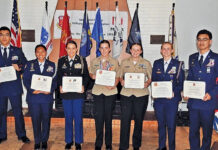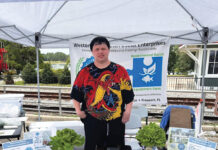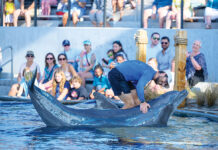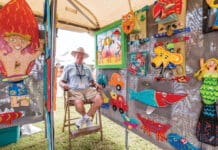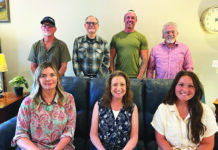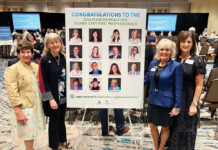By 1st Lt. Savanah Bray, 53rd Wing
A modified version of the Advanced Technology Anti-Gravity Suits was successfully tested by five female fighter pilots at Eglin Air Force Base in October.
ATAGS is a proven design and a critical life support item that protects aircrew members from the effects of high-G forces during maneuvers in fighter aircraft, but having been in use since 2001, the more than 20-year-old ATAGS design was developed primarily for standard men’s body types. Pilots who are shorter or have smaller or hard-to-fit body types often struggle to properly adjust the G-suit to fit well due to a limited range of adjustability in the standard sizes.
Directly tasked by the Secretary of the Air Force, engineers and subject matter experts at Air Force Life Cycle Management Center and AFWERX set out to address priority shortfalls in female specific aircrew equipment and gear, to include ATAGS. Instead of creating a new product altogether, experts determined that modifications could be made to the current ATAGS design to better fit women and various body types.

In order to properly and safely test the ATAGS, the 85th Test and Evaluation Squadron executed nearly 20 sorties in F-16 D-model aircraft. During these test sorties, pilots conducted low- and high-G basic fighter maneuvers and specific profiles to allow for accurate evaluation of the modified ATAGS. F-16 D-models were used so that in each sortie, a pilot wearing standard ATAGS was in the aircraft to ensure safety should an issue with the modified ATAGS arise.
For the purpose of this test, five pilots and one aircrew member tested the modified ATAGS and evaluated it based on comfort and performance when compared to the normal ATAGS typically worn. Pilots were asked to evaluate based on not only the ATAGS during high-G maneuvers, but also during regular activities like sitting, standing, walking and climbing into and out of the aircraft.
The pilots and aircrew who tested the ATAGS noticed significant improvements in comfort and functionality in the modified ATAGS.
Prior to flight testing, AFLCMC conducted developmental endurance testing, which simulated 14 years of use on identically designed modified ATAGS. Once those versions were successfully endurance-tested with no issue, flight testing began with the 46th Test Squadron providing the engineering and test planning expertise and the 85th TES executing the flight tests.
Following the flight testing, the 46th TS will provide a test report. Under the current acquisition strategy, the modified ATAGS could be in the hands of fighter pilots and aircrew who need it within 12-24 months.
For F-16 pilot, Maj. Shanon Jamison, testing the modified ATAGS was a great opportunity not only to help ensure pilots have gear that fits, works, and prevents G-induced loss of consciousness, but also to connect with other female fighter pilots.
“It is great to see the Air Force bring female pilots together to test these new improvements, and it also gave us a chance to share our career experiences with one another,” said Maj. Jamison. “There are things we have experienced in our career that many of our colleagues cannot understand, from as simple as worrying about getting your hair caught in a harness to as complex as how to return to flying while juggling breast-feeding your infant. The chance to come together for an important test, while also receiving continued mentorship and leadership from the female cadre of fighter pilots, was both useful and fulfilling.”
“These tests are important because they will ultimately increase the lethality of those who no longer have their mask slip down during a sortie, their G-suit crunch under their waist, or the extra fabric of a too big anti-exposure suit get in the way of their movements in the jet,” said Capt. Brittany Trimble, F-16 instructor pilot. “These don’t seem like big issues, but everything counts in the air, and having gear that fits and works as intended should be the standard. I’m excited the Air Force is working to identify and fix these issues, especially in innovative ways.”



